Farming Simulator 22: Fruit-growing
On this page of the Farming Simulator 22 guide, you will read about how to properly grow orchards on your farm.
Last update:
Here you will find out what plants can be grown in orchards in Farming Simulator 22, how to build an orchard, what can be done with fruit and what work should be done in orchards.
- Basic information
- Building orchards
- Harvesting, unloading and storage
- Work in the orchard
- Summary and profitability
Basic information
Fruit-growing in Farming Simulator 22 allows you to grow olives and grapes. However, you should not expect that everything will grow by itself. You need to build an orchard - choose any plot and prepare a place for your fruit using the construction menu. You will also have to do extra work. You need to cultivate soil, prune plants for the winter, and spray. This means that you will new machines and devices.
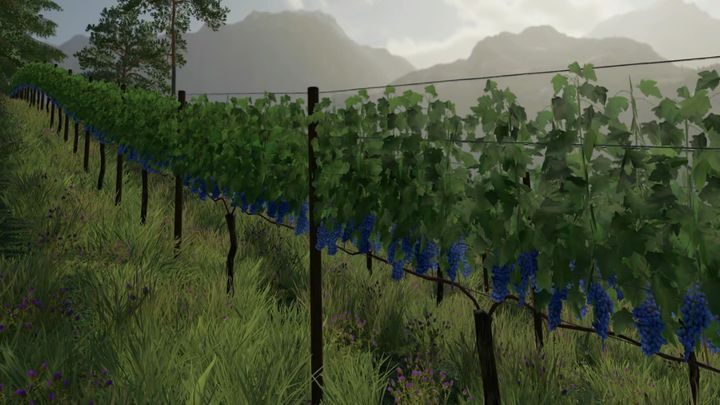
Olives and grapes belong to production chains. For example, you can make oil from olives, juice or raisins from grapes. On the following pages you will learn the details of cultivation: how to build an orchard, which machines to use, what is the profitability of cultivation and what you can process the collected fruits into.
Work in the orchard must be carried out by the player and can't be outsourced to employees.
Building orchards
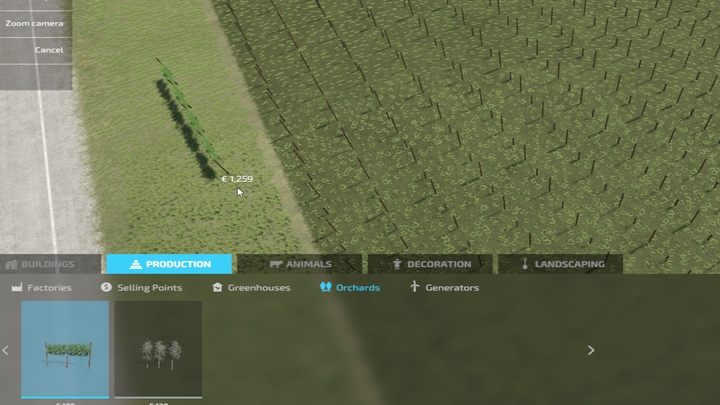
To set up an orchard, you must use the Build mode. Open it and choose which orchard - grape or olive - you want to plant. Then start building and drag the line in the selected direction. It should be noted that this is an expensive investment: a hectare field can cost close to EUR 500,000. After building an orchard you have nothing to do - you are just waiting for the first harvest. Only after that you will carry out the work preparing the orchard for the next harvest. You can create orchards anywhere, e.g. on grass, so it is worth buying a cheap plot without fields.
Harvesting, unloading and storage
After the orchard is built, just wait for the first harvest - it will be 100%. First of all, you need to get the right harvester: both types of fruit have specific harvesters in the store. However, they are used only for one type of plant.
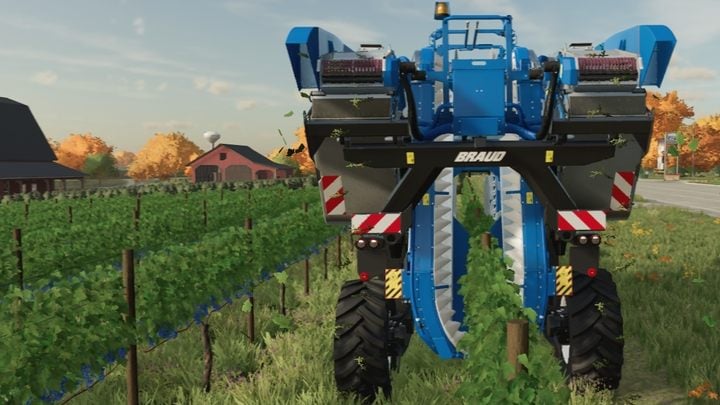
You cannot assign an employee to work on the olive/grape harvest. However, if you are well positioned, you can safely move forward using cruise control when the harvester is working. You can store your harvest, sell it in bulk or process it in factories.
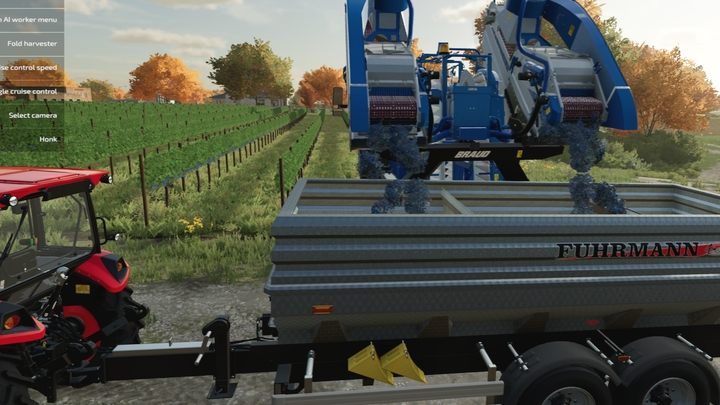
The harvesters are emptied by placing a trailer behind the harvester. You need to be inside the vehicle to carry out the emptying process.
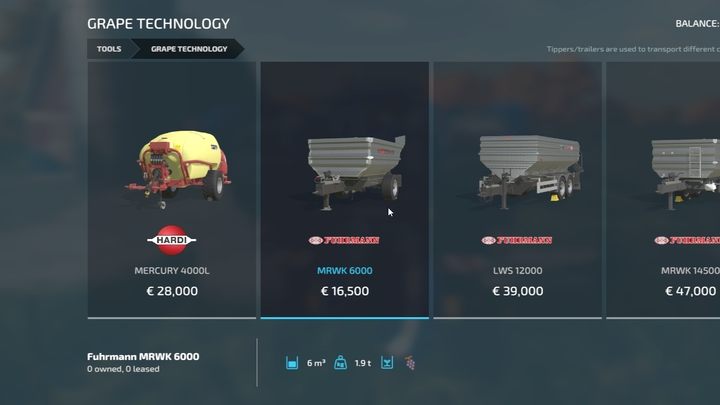
Important: you must use special trailers to transport grapes (not olives). You will find them in the store in the section with the technology for growing grapes.
However, neither olives nor grapes can be stored in silos. Therefore, if you want to expect better prices, you can store them in a trailer or on the ground (with the help of a belt system). But there's another option.
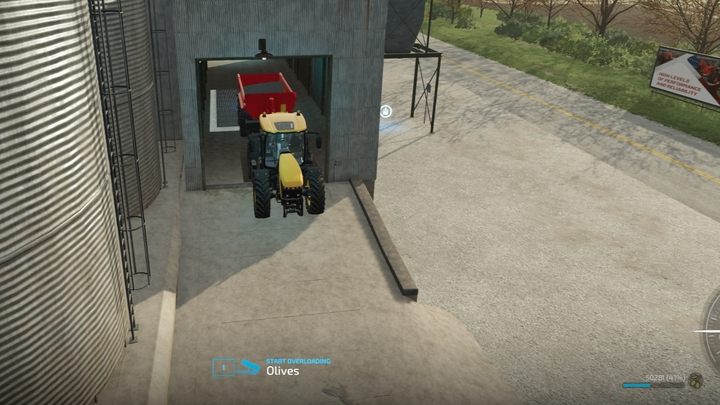
Railway warehouses (located next to the tracks) allow you to store both olives and grapes for free. You can later load them in the same place or transport them to another warehouse by train.
Work in the orchard
Use the smallest, narrow tractors that can fit between rows of shrubs. Machines used in fruit-growing should not exceed a width of 2m. The majority of dedicated machines are about 1.5m.
After harvesting, olives do not require any work - new fruits will grow on the next year. Of course, additional work is welcome to improve yields, but they are optional.
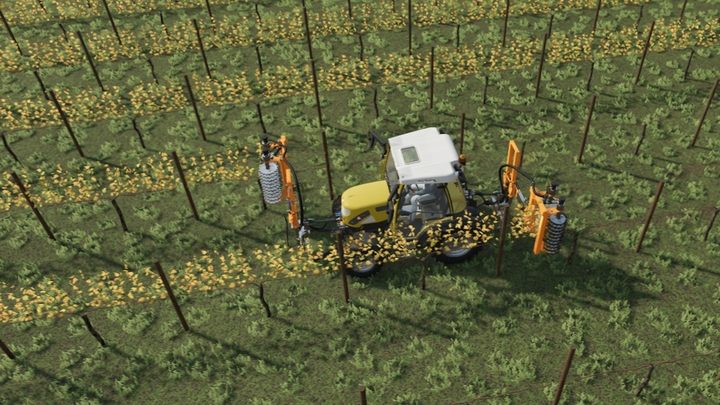
Grapes, however, require removing the dried leaves and branches after harvesting the fruits. Use Provitis MP 122 OCEA connected to a tractor. Nothing prevents you from using two machines at the same time, as long as the tractor allows it.
Mulching
Although the fruit grows on the bushes, you still have to take care of the soil. After harvesting, it is worth mulching to increase the yield slightly. SALEK MUL-1000 is a great mulcher for orchards.
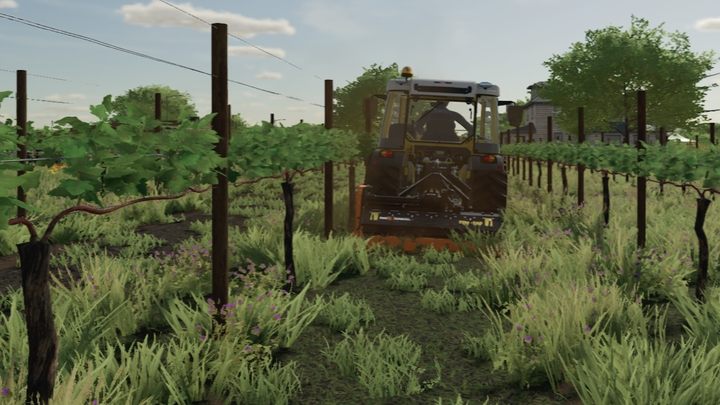
Mulching should be carried out when the grass is tall. You will notice that the machine is working properly when part of the grass will be shortened after it drives over it. This work does not need to be done after harvesting.
Fertilizing
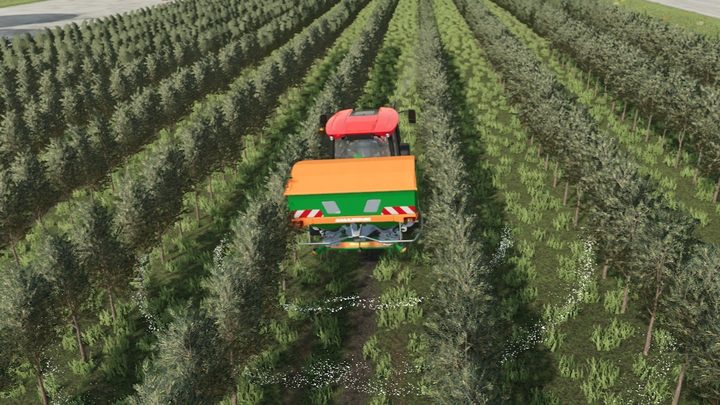
Orchards are subject to the same fertilisation rules as regular fields: single or double fertilisation to maximise yields. You can use a dedicated sprayer Hardi Mercury 4000l but you will also be able to significantly speed up the work using the fertilizer spreader Amazone ZA-TS 3200.
Cultivation
Cultivation can be carried out using a dedicated machine - Agrise Disc-O-Vigne V. Plowing is not required and will not increase the harvest.
Several small tractors are available for work in the orchard. We recommend the Rigitrac SKE 50 Electric, which is extremely dynamic and has attachment ports on the front and back.
Summary and profitability
Grapes:
- Setting up an orchard is cheaper,
- Require special trailers for transport,
- You can have them processed into raisins and juice,
- Amount of harvest: 17,000l/ha,
- Maximum market value: EUR 1,303.
Olives:
- Creating this orchard is slightly more expensive,
- They grow back on their own every year and in theory do not require additional work (low yield),
- You can convert them into oil,
- Amount of harvest: 16,000l/ha,
- Maximum market value: EUR 1,317.
(Prices of the maximum market value on the basis of average economic difficulties.)
You are not permitted to copy any image, text or info from this page. This site is not associated with and/or endorsed by the developers and the publishers. All logos and images are copyrighted by their respective owners.
Copyright © 2000 - 2025 Webedia Polska SA for gamepressure.com, unofficial game guides, walkthroughs, secrets, game tips, maps & strategies for top games.
